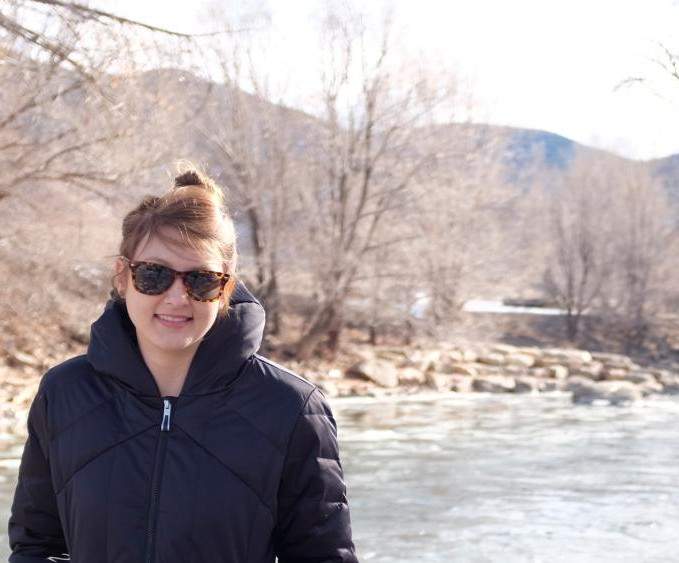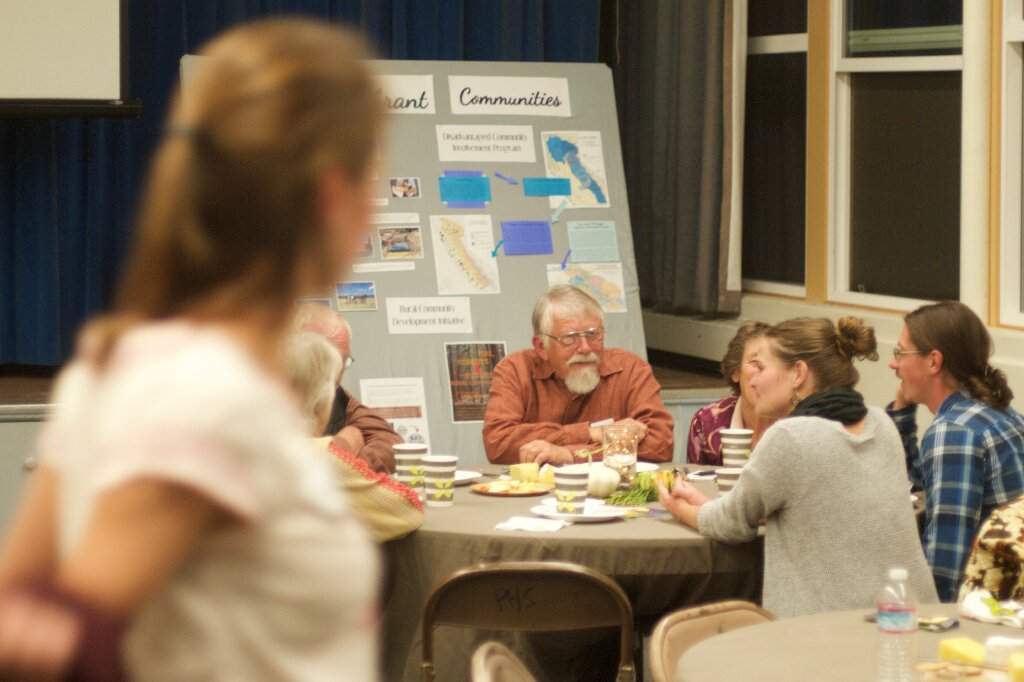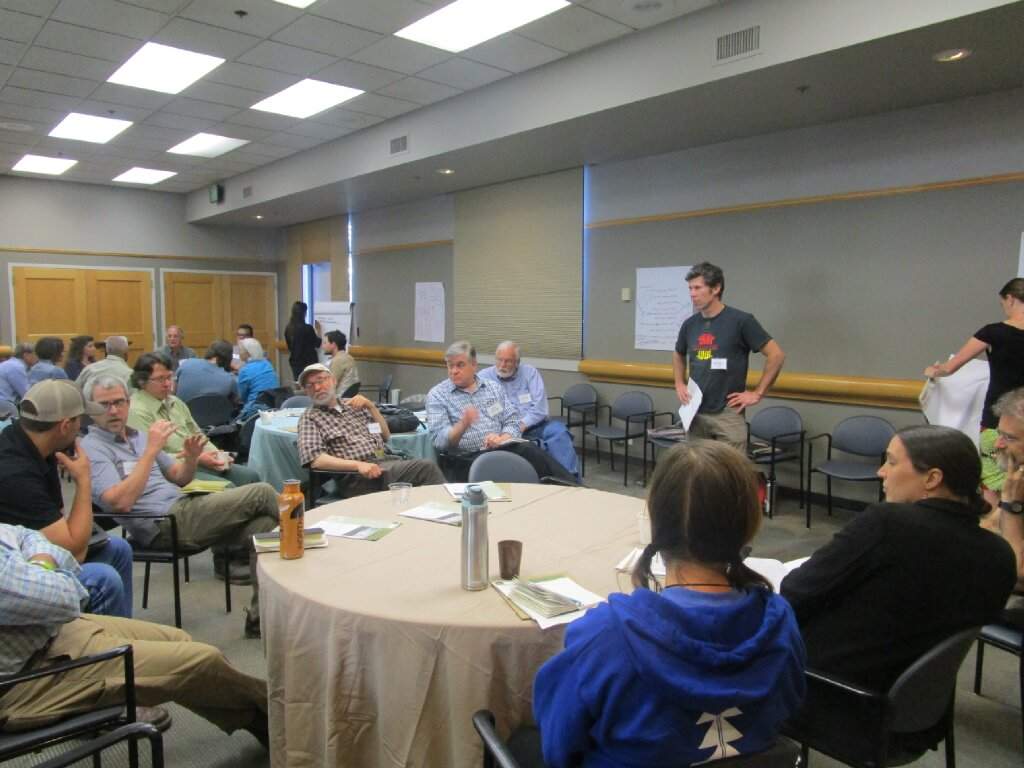Collaborative Natural Resource Management: An Interview with Dr. Elizabeth Koebele
A feature of working with community members at the Sierra Institute is passion. People, rightly, care a lot about what happens in the natural world just outside their doors. They get passionate, to a point that someone walking into a community meeting might sometimes think we aren’t debating but in conflict. Yet the reality is that people are just that passionate. They care deeply about the natural resources around them. Whether they are just recreational users, they work the land, or they work for Cal-Fire or other departments that strive to protect the land and the people that live there or they have any other connection to the land, they care, and so do we.
So, yes, people do argue. Some claim others aren’t doing enough. Sometimes people get frustrated. It is a very human reaction to a very complex set of issues we face; from the threat of wildfire, to drought, to simply wanting to protect the untouched beauty of the Sierra Mountains and the valleys within them. That does not mean we aren’t working together. It means we don’t always know the best way to work together, but we are getting better.
With all this in mind I spoke with Dr. Elizabeth Koebele about her work in studying and working with collaborative natural resource groups. In the later part of the 20th century environmental groups, developers, and other community members were often at odds, pushing their own agendas, unwilling or unable to compromise in the smallest ways. Yet as the 21st century dawned people working in this world began to shift their thinking towards a cooperative model. Not everywhere, of course, not all at once, but more and more the trend is towards finding a way to make peace with people who have a different vision than you or your group and figuring out what common ground you already have to build a better tomorrow.
Dr. Koebele has worked for years to better understand the policies that emerge from these community efforts. The more community groups can incorporate the lessons learned from past successes, and failures, of other collaborative groups the better equipped we become to manage our own natural resources in the future.
Perhaps the more we understand the complexities of this process the more we can all learn that our passion to get something done often has to be tempered by a longer-view; for the policy process is effective but it is not always efficient. Hopefully the following, lightly-edited for clarity, interview will help to shed more light on this aspect of natural resource management and public policy that most of us, myself included, know not nearly enough about.
MM: Could you please take a moment and introduce yourself and tell us a little about the type of work that you are doing?

EK: I’m an Assistant Professor of Political Science at the University of Nevada Reno. I research and teach about issues that fall under the broad umbrella of environmental policy, with a focus on water resources and natural hazards management in the western United States. My M.S. and Ph.D. degrees are in Environmental Studies from the University of Colorado Boulder. As a result of that training, much of my research is very interdisciplinary and oriented toward understanding the complex interconnections between human and environmental systems.
One major area of my research is collaborative environmental governance. In a nutshell, collaborative governance is an approach to public decision-making that engages diverse stakeholders in policymaking and management. It is used in many different policy areas, but it has become particularly popular in the environmental domain over the last thirty or so years. While collaborative governance processes can take many forms, they typically encourage stakeholders – who may have really different values about how an environmental resource should be managed – to deliberate, share information, and come to consensus. Ideally, these processes help stakeholders learn, recognize interdependencies, and develop creative solutions to shared problems. They can also help circumvent some of the problems that come along with “top-down” policymaking processes that lack public input. Sometimes collaborative processes actually lead to the production and implementation of new policies, and sometimes they serve more of an advisory function to public agencies. In my mind, collaboration holds a lot of promise for better managing environmental issues, but it’s certainly not a silver bullet. So, much of my research focuses on understanding what collaborative environmental governance processes actually do or don’t do and how they might be improved.
MM: Your most recent article is called “Cross-Coalition Coordination in Collaborative Environmental Governance Processes.” What is ‘cross-coalition coordination,’ and what are the opportunities that are brought on by incorporating it into your approach?
“A major goal of collaborative processes is to help these different coalitions work together”
EK: “Cross-coalition coordination” is policy jargon for “people on different sides working together.” Public policymaking processes are really complex and often span many years, so they involve a lot of different people and organizations. To make sense of these processes, some policy scholars (like me) study them through the lens of “coalitions.” Coalitions are groups of people with similar beliefs who work together. In many policy processes, different coalitions compete with one another to translate their goals into policy. Here’s a simplified example: In a policymaking process about water, you might have one coalition of people who want to divert water from a river to a growing nearby city, while another coalition wants to keep water in the river to protect the ecosystem. A major goal of collaborative processes is to help these different coalitions work together (i.e. engage in cross-coalition coordination) to reach consensus-based agreements that are a “win” for both sides. So, following from the example above, perhaps the two coalitions work together to determine minimum healthy flows for the river and decide to only divert water to the city when there are high flows; in the meantime, the city invests in water conservation programs rather than new diversions from the river in order to help sustain it in the long-run.
MM: You’ve written about ‘policy core beliefs’ in your work and it has been mentioned many times in other academic works. What are these core beliefs? And what are some of the common beliefs shared by groups working with watershed management?
EK: “Policy core beliefs” are what some scholars label the kinds of beliefs that stakeholders form coalitions around. These terms, as well as the “coalitions” idea I described, come from a theory used to study policymaking called the Advocacy Coalition Framework, or ACF. The ACF says that policy core beliefs are bigger and more ideological than preference for specific policies. These beliefs often differ by the management situation, but I’ll give you an example from a current project of mine: In the system I am studying, one coalition of stakeholders holds “pro-environment” policy core beliefs, meaning that they are primarily in favor of policy options that protect the environment. Another coalition of stakeholders holds “pro-development” policy core beliefs, meaning that they are primarily in favor of policy options that promote economic growth. So, you can imagine when a policy – say the expansion of a housing development near sensitive wetlands – is being debated, these policy core beliefs come into conflict.

MM: Traditionally it seems that those core beliefs were what were at the heart of a lot of different debats around natural resource management. The Timber Wars are possibly example of that as industry and desire for environmental protection in the Sierra Nevada mountains lead to constant policy battles. This led me to think of another term from your work, “hurting stalemates,” can you explain a little about what that is and why it matters to these collaborative projects?
EK: Hurting stalemates, another term from the ACF, are situations that occur when a conflict between competing coalitions extends for a long time and finally reaches a point where no one can “win” (i.e. get their own policy passed) but no one wants to back down either. These moments can be really important for spurring negotiation and collaboration because the often force both coalitions to realize the real potential for complete loss if they don’t find a way to work together.
MM: One thing that policy researchers have been great at is coming up with descriptive terms for these sort of recurring issues that come up in their studies. Hurting Stalemates is both descriptive and helpful in thinking about why some of these conflicts continue to escalate. Another term, I believe from Paul Sabatier originally though commonly used now, is ‘the Devil Shift,’ where, essentially, opponents in these policy debates start to see each other not just as other community members with different agendas and goals, but rather as full-blown enemies. Like with the stalemates that shift could lead to a loss on all sides as people get to a point where neither will give a little or back down at all. Another phrase you used was “averting a common enemy,” which, while less catchy a phrase than Devil Shift, seems like a critical component for making collaborations work. Can you explain more about how that works and what it is?
“It may be more important for each side to avert this problem quickly than to get their own way in the policy debate”
EK: One reason why members of different coalitions may decide to collaborate is to “avert a common enemy.” Put simply, this means that even if the coalitions don’t agree on a particular belief or policy, they recognize that they share an opponent or enemy that they both dislike. Because both coalitions want to “fight off” the same opponent, they may decide to work together and compromise. In my work on environmental policy, the opponent is sometimes a person or organization, but in other times it’s a natural phenomenon. Here’s an example: Imagine a situation where a group of water managers and stakeholders are trying to create a policy that will make their water system more resilient to drought because they fear negative effects of drought, like water shortages. This group is divided into two coalitions: one focused on infrastructure development that wants to build more storage reservoirs, and one focused on managing user demand that wants to incentivize water conservation. At first, the two coalitions may feel like their desired policies are totally in conflict; they may argue over who is right for so long that they start to approach a hurting stalemate situation. As this is happening, drought in their area gets worse and worse, to a point where some water users’ water supplies are actually cut off. Members of both coalitions realize that finding a way to avert these kinds of problems associated with drought – their common enemy – is really the most important thing they need to do; in fact, it may be more important for each side to avert this problem quickly than to get their own way in the policy debate. When some members of each coalition recognize this common enemy, it may can spur collaboration – say, on a policy that changes the way existing reservoirs are being operated in order to get through the worst of the current drought. While in some cases this may lead to a short-term solution that is only in place until the common enemy is effectively averted, in others, it might help uncover innovative solutions or common goals that were previously unrecognized by both coalitions.

MM: Discovering that different people have shared common goals and then finding ways to work together is a big part of what the Sierra Institute does. Your research, generally, looks at the outcomes of these collaborations. What do you hope people will take away from your research that will help in developing collaborative policy decision making from the beginning of the process?
EK: I think collaboration is the way of the future in environmental and natural resource management. With climate change and population growth and a host of other pressures on our environment, I think we’re going to need to find new ways to work together and be creative about promoting sustainability across environmental systems. However, I also think that people are people, and as a result, we can be short-sighted and set on getting our own way, especially when we’re talking about things that are near and dear to us. As a result, collaborative processes can sometimes get stunted, produce sub-optimal solutions, leave out important voices, and lead to entrenched conflict. So broadly, I hope my research helps identify ways that public agencies, NGOs, and other stakeholders can “do collaboration better.” In specific case studies, my research can help uncover solutions that can be used to improve management, especially by looking at how human decisions and environmental systems are connected. But I’m often really focused on helping to improve the processes by which decisions are made.
——-
You can read Dr. Koebele’s bio from the University of Nevada, Reno here
For Further Reading: Dr. Koebele’s article in Policy Studies Journal (January 2019): “Cross-Coalition Coordination in Collaborative Environmental Governance Processes”


